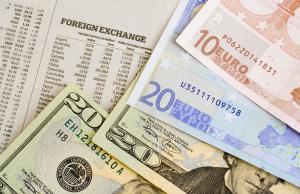As the U.S. dollar strengthens and makes U.S. grain relatively more expensive in the global marketplace, the impact of favorable trade policies on sales is coming to the forefront in marketers’ minds.
Over the last year, the U.S. dollar has strengthened against most currencies, including 15 percent against the currencies of most major corn customers since 2012. In the time between 2001 and 2009, the dollar strengthened but did not significantly affect the price of U.S. corn to customers. This year will likely follow that pattern.
However, the effects of a stronger dollar are more pronounced in comparison with the United States’ corn export competitors, with the greenback strengthening by 42.5 percent against an index of major competitor currencies.
“The most important implication of a strong dollar will be for U.S. market share as competitor countries will be able to export corn at lower prices than the United States,� said U.S. Grains Council (USGC) Vice President Erick Erickson. “With expanded production in South America and Ukraine, U.S. competitiveness in major corn markets may be reduced up to the capacity of these major competitors.�
Currency competitiveness is one more challenge for U.S. export growth and an added incentive to move forward with pending trade agreements to strengthen the U.S. market position.
“We have to remember to keep a long-term perspective,� Erickson said. “So many different factors that influence exports are beyond our country’s control including the strength of the dollar, world acres planted, weather and more. However, sound trade policy is not one of those uncontrollable factors. It’s one of the things our policy makers can influence, so it’s important to get it right.�
The Trans-Pacific Partnership (TPP) and the Trans-Atlantic Trade and Investment Partnership (T-TIP) are two potential multilateral agreements that would offer the United States greater market access to countries in the Pacific Rim and the European Union, respectively. Negotiations on both are underway but could be stymied by a lack of trade promotion authority (TPA), which allows U.S. negotiators to finalize agreements for an up-or-down vote in Congress.
As the dollar strengthens – and with USDA projecting an increase of 3.2 million metric tons (126 million bushels) in world corn production in 2015 – agreements like these would give U.S. coarse grains and co-products more access to critical markets, which would in turn help lessen impacts from factors like the strengthening U.S. dollar on U.S. agricultural exports.
“These trade agreements hold great promise for expanding trade opportunities for U.S. agriculture,� Erickson said. “The countries engaged in the TPP negotiations are responsible for 40 percent of global trade and have a combined population of 800 million people. T-TIP has the potential to boost U.S. trade with the EU by more than $140 billion within five years and increase GDP by $180 billion.
“We can’t control the weather and we can’t control the value of the dollar. But we can unlock some important doors, if we can finalize these agreements.�


